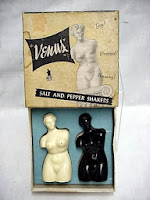History of Shoes
 |
| History of Sho |
Vintage shoes appeal to women who want a unique accessory, as well as to collectors searching for display pieces.
 |
| History of Shoes |
From delicate Edwardian items to 1980s trainers, there’s plenty to choose from.
Shoe styles have changed frequently since the 1900s, responding to the fashions of the day with startling rapidity.
 |
| History of Shoes |
Whether for display or to wear, there are plenty available.
 |
| History of Shoes |
History of Shoes Fashionable French.
In the early 1900s womens footwear was robust lace up boots were the first choice for everyday wear and had sturdy, waisted Louis heels, a style that originated at Louis xivs court in 17th-century France.
 |
| History of Shoes |
Shoes of the 1900s, were reserved for formal occasions and evening wear, also inspired by Louis xiv styles and modelled on 17th century heeled slippers.
They were often made from silk and decorated with embroidery, bows, and elaborate buckles.
They came in pale colours, such as lilac, green, and were worn with patterned stockings.
 |
| History of Shoes |
Straps and pumps.
They came in dazzling colours such as Scarlett, Emerald, and gold and are highly collectable.
 |
| History of Shoes |
Louis heels were still in vogue, and some shoes featured cut away sides or peep toes.
In the 1930s strappy designs were still popular, but streamlined pumps were the dominant style.
Also known as court shoes, pumps were plain slip on shoes with flat or raised heels, based on 18th century foot mens slippers.
History of Shoes Platforms and wages.
Wartime rationing in the 1940s required leather to be reserved for the armed forces.
So designers came up with statuesque platform shoes, made from Cork, wood , fabric covered plastic, felt and straw.
Forces pin ups, such as Betty Grable, made platforms seem glamorous and hugely desirable.
Examples can often be found in charity shops, car boot sales, and jumble sales for around $50.or less.
Finer items, or those in better condition can also be found at vintage and second-hand clothes shops and dealers.
 |
| History of Shoes |
Examples of his innovations can be found generally at vintage clothes dealers for around $50 and rarely exceed $200.
 |
| History of Shoes |
The heel on some stilettos were so sharp that women were banned from wearing them in certain buildings because of the damage the did to the flooring.
Roger Vivier, a parisian shoemaker, made some of the finest
examples.
His gem -encrusted pumps are highly sought after and often
exceed $2000 at auction .
You can also find simpler styles from around $30-$50
upwards.
The decade for boots.
The youthful styles of the 1960s were reflected in the Mary
Jan look often worn with mini skirts. Pumps with squared toes and heels were
also typical of the time.
Boots played a major role in 1960 style from futuristic
white plastic go-go boots to new age hippie boots and with the current fashions
for retro styling, they can be expensive.
 |
| history of shoes |
Despite this good examples can be found for around hundred
dollars.
Timeless soles.
 |
| history of shoes |
A pair of Terry De Havilland pale green, pink, purple,
orange snake skin effect wedge sandals from the early 1970s may cost around
$350 are more.
These and wooden platforms candies shoes are a good
investment, as the profile of the 1970s fashions is rising.
 |
| history of shoes |
Disco mania swept Europe and the USA in the latter part of
the flanking 70s and dressy dance shoes became fashionable once more.
The French designer Maud Frizon was claimed for the striking
corn heels and colourful decorative designs of her disco shoes, which can now
be found in many second-hand clothes shops for around $80.
During the 1980s styles such as pump and strappy shoe with
towering or Louis heels were dusted off
and given a flashy makeover by Ferragamo and Chanel, all other examples of
these can be found at around hundred dollars or less.
Manolo Blahnik, known for his dainty, open, strappy shoes
with high heels, is still prominent and his shoes from the 1980s can fetch up
to $200 are more.
Collectors tips on what to buy.
Trainers are among the most desirable collectables at the
moment, and prices are rising rapidly, look for retro trainers like Puma,
Clyde, Adidas, superstar, and Nike cortez.





















.jpg)







